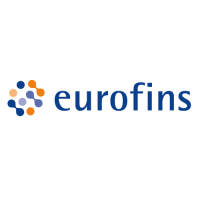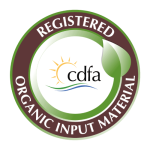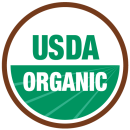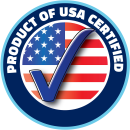Impact of Seaweed Extract on Turfgrass Growth and Nutrition on a Golf Green to USGA Specification
T. Butler and A. Hunter
School of Biology and Environmental Sciences Agriculture and Food Science Centre University College Dublin
Belfield, Dublin 4
Ireland
Proc. XXVII IHC – Hort. Plants in Urban and Peri-Urban Life Eds.-in-Chief: T.A. Lumpkin and I.J. Warrington
Acta Hort. 762, ISHS 2007
Keywords: growth, nutrient rate, proline, seaweed extract
ABSTRACT
The primary concern of golf course superintendents is the maintenance of turfgrass quality on facilities subjected to regular close grass mowing and high traffic levels. Combined, these factors create stress on plants. The problem is compounded by the use of inert sand based media, which in contrast to sand/soil greens have a poor buffering capacity and require high quantities of nutrients and irrigation. Several products such as seaweed extracts have been developed to help turfgrass managers to maintain high turfgrass quality in the face of these many problems. This research was initiated to study the impact of applying a seaweed extract onto a turfgrass sward grown under reduced nutrient input rates. Tissue and soil nutrient measurements, grass growth, colour and stress tolerance levels were measured. The application of seaweed extract significantly increased grass growth, leaf tissue N, P, K and Fe, grass colour and stress tolerance levels.
INTRODUCTION
Several new products have been developed to help turf professionals deal with day-to-day management challenges; one such development is in the introduction of biostimulants (Hamza and Suggars, 2001). It is claimed that biostimulants maximise plant health by promoting stronger roots, increasing resistance to disease, reducing reliance on irrigation, fungicides and fertilisers and through decomposing thatch (Isaac, 2000). Many important benefits of biostimulants are based on their ability to influence hormonal activity. Hormones in plants (phytohormones) are chemical messengers that regulate normal plant development as well as responses to the environment. Root and shoot growth, as well as other growth responses are regulated by phytohormones. Compounds in biostimulants can alter the hormonal status of a plant and exert large influences over its growth and health (Long, 2004). Biostimulants contain metabolites that not only stimulate plant growth, but also promote the plant health, which is an important factor (Doyle, 2000). Several products have been categorised as biostimulants, including humic acid, growth regulators, seaweed fertiliser and organic products (Isaac, 2000).
Scientific information on numerous aspects of biostimulant use on sand based rootzones is lacking. The objectives of this research were to study the effects of pure seaweed extract on turfgrass growth, yield, microbial activity and stress tolerance in outdoor situations under separate granular and foliar fertiliser programmes.
MATERIALS AND METHODS
A USGA specification golf green was constructed at Rosemount Horticultural Station, University College Dublin during the summer/autumn of 2002. The green was sown in August 2004 with Agrostis stolonifera var. ‘Penn A4’ at recommended seeding rates of 6 g.m-2. In July 2005, a two factor (fertiliser rate and biostimulant type) experiment consisting of applying a seaweed extract (supplied by Maxicrop) at the recommended rate of 2.0 ml m-2 on a bi-weekly basis onto treatment plots receiving three separate rates (normal/recommended, two-thirds and one-third) of granular fertiliser taken from a recommended fertiliser programme for Irish climatic conditions was initiated.
Two grams of granular seaweed extract was dissolved in 50 ml of mains water to aid even distribution and applied using a hand held sprayer to 0.5 m x 0.5 m plots located within one square metre areas of turf. A control biostimulant treatment was also used which only received the three separate nutrient rates respectively. Guard rows measuring 0.65 m x 0.65 m were laid out between each experimental plot. A wetting agent (Sprayfast) was added to the water solution at the recommended rate of 0.025 ml m-2.
The nutrient status of the rootzone at the initiation of the experiment is given in Table 1 and the total nutrients applied are given Table 2. Irrigation was applied every second day between July and mid October for four-minute intervals at each irrigation event. Irrigation was also applied after each fertiliser application. The grass was cut weekly on Thursday (the day of measurement) to a height of 4.5 mm using a Jacobsen pedestrian cylinder mower. The grass from each plot was collected and weighed giving the weights for each week’s total grass growth. The grass samples were oven dried at 75°C ± 1°C for 48 hours, transferred to a desiccator containing silica gel, cooled and the dry weight recorded. The samples were bulked together each month, sub sampled and tissue nutrient analysis carried out. Tissue nitrogen was measured using a combustion analyzer (LECO FP-328 protein/nitrogen analyser, LECO Corp., St. Joseph, MI). Phosphorus was determined colorimetrically according to the method of Murphy and Riley (1962). Potassium analysis was carried out by Induction Coupling Plasma Atomic Spectrometry (ICP) (Isaac and Johnson, 1985).
The leaf colour of the grass tissue from each trial plot was subjectively evaluated every four weeks using the National Turf Evaluation Programme scale (1-9) where 1 represented dead turfgrass, 6.5 represented the minimal acceptable quality and 9 represented the greatest achievable quality (Petrovic et al., 2005). Leaf proline concentration was measured by collecting freshly cut grass from each plot at the end of the experiment. Proline concentration was measured using the procedure of Bates et al. (1973).
A root mass corer measuring 6.35 cm x 12.7 cm was used to take rootzone cores. Root mass was determined by drying the roots at 65°C ± 1°C for 24 hours. Excess soil was removed. The dry roots were weighed and ashed at 450°C ± 1°C for 8 hours and the ash was weighed. Root mass was calculated by subtracting the ashed mass from the dry mass (Doak et al., 2005).
The plots were laid out in a completely randomised design with three replications.
Statistical analysis was performed on all variables using SAS (SAS Institute, 2001) PROC MIXED and a least significance difference (LSD) test was performed on each data set.
RESULTS
Grass Dry Weight
Significant interactions between treatment factors were found (Table 3). The seaweed extract significantly increased grass dry weight in comparison to the control on the first two measurement dates at all except the two-thirds nutrient rate on both the first and second measurement dates (Table 3). No significant interactions were found on the third measurement date. Grass weight significantly increased with increasing nutrient rate for both biostimulants in August, however in September, no significant difference in grass dry weight was found between the one-third, and two-thirds nutrient rates for the seaweed biostimulant (Table 3).
Tissue Nitrogen
No significant interactions between treatment factors were found. Tissue nitrogen increased significantly with increasing fertiliser rate on the three measurement dates (Table 4). The seaweed extract significantly increased tissue N concentration compared to the control biostimulant in August. However, no significant differences in tissue N concentration between biostimulant and control were found on the other measurement dates (Table 5).
Tissue Phosphorus
Significant interactions between treatment factors occurred on the first two measurement dates (Table 6). Tissue P was significantly higher for the seaweed extract at the full nutrient rate compared to the one-third nutrient rate on the first and second measurement dates, and significant differences in tissue P were found between the onethird, and two-thirds nutrient rates on both dates (Table 6). No significant difference in leaf tissue P concentration was found between the two-thirds, and one-third nutrient rates with the control biostimulant on the first or second measurement date (Table 6). The seaweed extract significantly increased leaf tissue P concentration compared to the control biostimulant at two-thirds, and one-third nutrient rates in August, however, in September, the seaweed extract significantly increased the tissue P concentration compared to the control biostimulant at only the two-thirds nutrient rate (Table 6).
Tissue Potassium
No significant interactions between treatment factors were found. There was a significant difference in leaf tissue potassium concentration between the full fertiliser treatments and one-third fertiliser treatments on all three measurement dates (Table 7). However, only on the second measurement date did full fertiliser rate significantly increase leaf tissue K concentration over two-thirds fertiliser rate. The seaweed extract significantly increased leaf tissue K levels on the first two sampling dates (Table 8).
Grass Colour
No significant interactions between treatment factors were found. There was a significant difference in grass colour on all measurement dates between the three treatments. In August and October, grass colour significantly increased as fertiliser rate increased. However, there was no significant difference in grass colour between the onethird, and two-thirds fertiliser rates in September (Table 9). The seaweed extract significantly increased grass colour compared to the control biostimulant in both September and October (Table 10).
Leaf Proline Concentration
Significant interactions between treatment factors were found (Table 11). The full nutrient rate significantly increased leaf proline concentrations in comparison to both twothirds and one-third nutrient treatments, however there was no significant difference in leaf proline concentration between the two-thirds and one-third nutrient rates (Table 11). At one-third nutrient rate, the seaweed extract significantly reduced leaf proline in comparison to the control biostimulant (Table 11).
Root Mass
Significant interactions between the nutrient rate and biostimulants were found (Table 12). Root mass for the seaweed extract treatment was significantly greater at the one-third nutrient rate compared to the other two nutrient rates, however for the control biostimulant, root mass was significantly higher at the full nutrient rate compared to the other nutrient rates (Table 12). The seaweed extract significantly increased root mass compared to the control biostimulant at two-thirds, and one-third nutrient rates, however, no significant difference in root mass was found between the biostimulant treatments at the full nutrient rate.
DISCUSSION
Grass Dry Weight
Results for clipping weights were generally similar to those for colour ratings. Clipping weights increased with increasing nutrient application as expected. Grass growth between normal and two-thirds nutrient levels were not very different, however at the one-third fertiliser rate, grass growth was severely retarded clearly demonstrating that the use of such low nutrient application rates could not be recommended under intensively used turf. The results show that grass growth at two-thirds the recommended nutrient rates was relatively satisfactory and that when fertiliser was applied at this lower rate it had a minimal negative impact on grass yields. The use of biostimulants, appeared to have some positive impact upon grass growth, which is in agreement with Hunter and Butler (2005).
Leaf Tissue Nitrogen Concentration
Turfgrass N tissue concentrations typically range from 2% to 6% of total dry matter (McCarty et al., 2003). The results show that the tissue nitrogen concentration was well within this recommended range for all nutrient rates on all measurement dates. Excess nitrogen increases leaf succulence (water content) and results in plant tissues with thinner cell walls (Fry and Huang, 2004). On all measurement dates, grass colour for the reduced nutrient rate was also within the acceptable range and thus shows that by reducing the nutrient rate, sward growth was not adversely affected.
Leaf Tissue Phosphorus Concentration
The desired phosphorus level in leaf tissue ranges between 3000-5500 ppm (Lawson, 1996; McCarty et al., 2002). Phosphorus is required for photosynthesis, oxidation reactions, the interconversion of carbohydrates, and as a component of genetic material such as nucleic acids (Turner and Hummel, 1992). Phosphorus concentrations were within the recommended levels for the three nutrient rates on all measurement dates. The plots receiving the lower nutrient rate showed grass colour scores within the acceptable range of 6 and established that the turf was not deficient in phosphorus at any period throughout the experiment. These results suggest that phosphorus recommendations for Irish climatic conditions may be excessive and this is in agreement with the findings of Hunter and Butler (2005), who suggested that recommended phosphorus levels should be reduced.
Leaf Tissue Potassium Concentration
The potassium values in the tissue were well within the desired level of 1.0% to 2.5% as suggested by Lawson (1996). This suggests that potassium nutrition may have been excessive, since the reduced nutrient rates still gave tissue K concentrations within the acceptable range. The seaweed extract increased tissue potassium compared to the control in both August and September suggesting that there is a synergism between the seaweed extract and the fertiliser in relation to K uptake – this is in agreement with Hunter (2004). Potassium can be lost from the soil through leaching with losses through rootzone drainage for an A. stolonifera sward (grown on sand) being in the order of 52% (Beard, 1973; Sheard et al., 1984). Potassium is often called the “health element” because an ample supply helps to increase turf tolerance to heat, cold, drought, disease and wear (McCarty et al., 2002). As the potassium concentration within the plant increases, tissue hydration decreases and turfgrass wear tolerance is reported to increase proportionally with the potassium level (Beard, 1973). High potassium levels usually decrease the severity of diseases such as the incidence of Dollar Spot (Markland et al., 1969). These results suggest that seaweed extract may be useful in increasing tissue K concentration and thus reducing susceptibility to disease infestation.
Grass Colour
It is well known that colour is one of the best indicators of turfgrass performance (Beard, 1973). From this research it appears that the use of a seaweed extract in outdoor conditions enhanced grass colour thus substituting for additional nitrogen applications to maintain verdure. This concurs with the findings of Dixon (2003) who reported that seaweed extracts affect chlorophyll production by boosting the photosynthetic process, thereby directly stimulating natural plant growth. It also indirectly concurs with Thorogood (1993) who reported that changes in the overall turf colour with time are an important indicator of a particular environmental regime, especially the shade of green colour where in essence greenness reflects active growth (Adams and Gibbs, 1994). At the normal and two-thirds nutrient application rates, grass colour was acceptable. However, at one-third the nutrient rate, grass colour was poorer, yet was still within the acceptable range. This is probably because the grass was not under stress from heavy wear and if the experiment was carried out on an intensively trafficked golf green, then it is likely that more differences would have been seen.
Leaf Proline Concentration
Seaweed extracts have been shown to boost natural defence mechanisms, helping the plant maintain a state that is better able to cope with environmental stresses such as drought, waterlogging or man-induced pressure from constant wear (Dixon, 2003). The seaweed extract was found to suppress proline accumulation in this study. The normal nutrient rate gave high leaf proline concentrations compared to lower nutrient rates when the seaweed extract was included, which may suggest that this nutrient rate was excessive and forcing excessive plant growth.
Root Mass
The seaweed extract increased root mass and rooting compared to the control. This suggests that seaweed extracts may be very useful in promoting dense rooting systems, which is a critical component of stress tolerance in turfgrass. However, this root mass increase only occurred at the two-thirds, and one-third nutrient rate, which suggest that incorporating seaweed extracts into reduced input management systems may help to improve the health status of the plant and compensate any nutrient input reduction through a denser root system which could possibly increase nutrient uptake and reduce nutrient loss. When the seaweed extract was applied at the normal nutrient application level, its efficacy was masked or perhaps nullified.
ACKNOWLEDGEMENTS
The Irish Research Council for Science, Engineering and Technology provided funding for this research. The authors wish to express their gratitude to Maxicrop, U.K. for the supply of seaweed extract.
Literature Cited
Adams, W.A. and Gibbs, R.J. 1994. Natural Turf for Sport and Amenity: Science and Practice. CAB International, Wallington, United Kingdom. 404p.d
Bates, L.S., Waldren, R.P. and Teare, I.D. 1973. Rapid determination of free proline for water-stress studies. Plant and Soil 39:205-207.
Beard, J.B. 1973. Turfgrass: Science and Culture. Prentice-Hall, Inc., New Jersey. 658p.
Dixon, G. 2003. Weeding out results. Turf Professional. June: 26-27
Doak, S.O., Schmidt, R.E. and Ervin, E.H. 2005. Metabolic enhancer impact on creeping bentgrass leaf sodium and physiology under salinity. Intern. Turf Soc. Res. J. 10:45849.
Doyle, S. 2000. Turf managers and biostimulants: an ongoing relationship [Online].
Available at www.greenmediaonline.com?st/2000/0900/0900bio.asp
Fry, J. and Huang, B. 2004. Applied Turfgrass Science and Physiology. John Wiley and Sons, Hoboken, New Jersey. 310p.
Hamza, B. and Suggars, A. 2001. Biostimulants; myths and realities [Online]. Available at www.turfgrasstrends.com/turfgrasstrends/article/articlDetail.jspid=13205
Hunter, A. 2004. The influence of liquid seaweed products on turfgrass growth and development. Acta Hort. 661:271-277.
Hunter, A. and Butler, T. 2005. The effects of humic acid, seaweed extract and PHC organic plant feed on the growth and development of Agrostis
Stolonifera Penn A4 grass in a sand based rootzone. Inter. Turf. Soc. Res. J. 10:937-943.
Isaac, R.A. and Johnson, W.C. 1985. Elemental analysis of plant tissue by plasma emission spectroscopy: collaborative study. J. Assoc. Offic. Analy. Chem. 68(3):499-505.
Isaac, S. 2000. Microbial Stimulants. Turf. Bull. 208:28-30.
Lawson, D.M. 1996. Nutrients for Turf. The Sports Turf Research Institute, Bingley, United Kingdom. 45p.
Long, E. 2004. The Importance of Biostimulants in Turfgrass Management [Online]. Available at http://www.golfenviro.com/Article%20Archive/Biostimulants-Roots.htm
Markland, F.E., Roberts, E.C. and Frederick, L.R. 1969. Influence of nitrogen nutrients on Washington creeping bentgrass, Agrostis palustris Huds. 11 Incidence of dollar spot, Sclerotinia homoeocarpa, infection. Agron. J. 61:701-705.
McCarty, L.B., Rodriquez, I.R., Bunnell, B.T. and Waltz, F.C. 2003. Fundamentals of Turfgrass and Agricultural Chemistry. John Wiley, New Jersey. 375p.
Murphy, J. and Riley, J.P. 1962. A modified single solution method for the determination of phosphate in natural waters. Analy. Clin. Acta 27:31-36.
Petrovic, A.M., Soldat, D., Gruttadaurio, J. and Barlow, J. 2005. Turfgrass growth and quality related to soil and tissue nutrient content. Inter. Turf. Soc. Res. J. 10:989-997.
SAS Institute. 2001. SAS User’s Guide. Version 8.2. SAS Inst., Cary, NC.
Sheard, R.W., Haw, M.A. and Ferguson, J.A. 1984. The nutritional requirements of bentgrass on all-sand rooting media. p.25-28. Turf. Res. Annu. Rep. Ont. Agric. Coll., Univ. of Guelph.
Thorogood, D. 1993. Temporal changes in turfgrass culture in a range of Lolium perenne L. cultivars and breeding lines. J. Sports. Res. Ins. 69:111-169.
Turner, T.R. and Hummel, N.W. 1992. Nutritional requirements and fertilisation. p.385439. In: D.V. Waddington, R.N. Carrow and R.C. Shearman (eds.),
Turfgrass Agronomy Monograph 32, Amer. Soc. of Agron. CSSA, S A. Wisconsin.
TABLES
Tables
Table 1. Soil nutrient status at initiation of experiment.
Table 2. Total amount of N, P, and K (kg/hectare) applied.
Table 3. Mean turfgrass dry weight (g.m-2) interaction main effects.
† Means followed by the same lower class letter within a column are not significantly different according to Fisher’s LSD (P=0.05).
‡ Means followed by the same upper class letter within a row are not significantly different according to Fisher’s LSD (P=0.05).
Table 4. Effect of nutrient rate on turfgrass leaf tissue nitrogen concentration (%).
† Means followed by the same letter within a column are not significantly different according to Fisher’s LSD (P=0.05).
Table 5. Effect of biostimulants on turfgrass leaf tissue nitrogen concentration (%).
† Means followed by the same lower class letter within a column are not significantly different according to Fisher’s LSD (P=0.05).
‡ Means followed by the same upper class letter within a row are not significantly different according to Fisher’s LSD (P=0.05).
Table 6. Mean turfgrass leaf tissue phosphorus concentration (%) interaction main effects.
† Means followed by the same lower class letter within a column are not significantly different according to Fisher’s LSD (P=0.05).
‡ Means followed by the same upper class letter within a row are not significantly different according to Fisher’s LSD (P=0.05).
Table 7. Effect of nutrient rate on turfgrass leaf tissue potassium concentration (%).
† Means followed by the same letter within a column are significantly different according to Fisher’s LSD (P=0.05).
Table 8. Effect of biostimulants on turfgrass leaf tissue potassium concentration (%).
† Means followed by the same letter within a column are not significantly different according to Fisher’s LSD (P=0.05).
NS indicates not significant at P=0.05.
Table 9. Effect of nutrient rate on grass colour.
Table 9. Effect of nutrient rate on grass colour.
† Means followed by the same letter within a column are significantly different according to Fisher’s LSD (P=0.05).
Table 10. Effect of biostimulants on grass colour.
Table 10. Effect of biostimulants on grass colour.
† Means followed by the same lower class letter within a column are not significantly different according to Fisher’s LSD (P=0.05).
‡ Means followed by the same upper class letter within a row are not significantly different according to Fisher’s LSD (P=0.05).
Table 11. Mean leaf proline concentration (µg.g-1 fresh weight) interaction main effects.
† Means followed by the same lower class letter within a column are not significantly different according to Fisher’s LSD (P=0.05).
‡ Means followed by the same upper class letter within a row are not significantly different according to Fisher’s LSD (P=0.05).
Table 12. Mean turfgrass root mass (g) interaction main effects.
† Means followed by the same lower class letter within a column are not significantly different according to Fisher’s LSD (P=0.05).
‡ Means followed by the same upper class letter within a row are not significantly different according to Fisher’s LSD (P=0.05).
SEAWEED IS CHANGING THE WORLD
Seaweed farming at sea is becoming an increasingly competitive biomass production candidate for food and related uses.
Copyright © 2023 Nork Group





